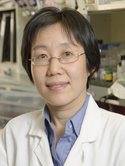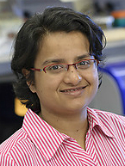| Abstract: |
Known gene mutations account for approximately 50% of the hereditary risk for breast cancer. Moderate and low penetrance variants, discovered by genomic approaches, account for an as-yet-unknown proportion of the remaining heritability. A truncating mutation c.325C>T:p.Arg109* (R109X) in the ATP-dependent helicase ERCC3 was observed recurrently among exomes sequenced in BRCA wild-type, breast cancer-affected individuals of Ashkenazi Jewish ancestry. Modeling of the mutation in ERCC3-deficient or CRISPR/Cas9-edited cell lines showed a consistent pattern of reduced expression of the protein and concomitant hypomorphic functionality when challenged with UVC exposure or treatment with the DNA alkylating agent IlludinS. Overexpressing the mutant protein in ERCC3-deficient cells only partially rescued their DNA repair-deficient phenotype. Comparison of frequency of this recurrent mutation in over 6,500 chromosomes of breast cancer cases and 6,800 Ashkenazi controls showed significant association with breast cancer risk (OR BC = 1.53, OR ER+ = 1.73), particularly for the estrogen receptor-positive subset (P < 0.007). SIGNIFICANCE: A functionally significant recurrent ERCC3 mutation increased the risk for breast cancer in a genetic isolate. Mutated cell lines showed lower survival after in vitro exposure to DNA-damaging agents. Thus, similar to tumors arising in the background of homologous repair defects, mutations in nucleotide excision repair genes such as ERCC3 could constitute potential therapeutic targets in a subset of hereditary breast cancers. © 2016 American Association for Cancer Research. |


















